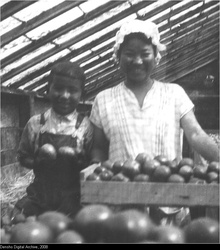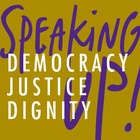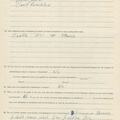The National Archives and Records Administration (NARA) as the nation’s “record-keeper” is responsible for preserving and making available permanent historic records created by federal agencies, offices, committees, and courts. Included are federal records created during and after the forced mass removal and incarceration of Japanese Americans living along the west coast of the United States during World War II. These records may be found in many of the NARA facilities nationwide. Copies of some of the records can also be found on NARA microfilm publications and websites. The goal of this article is to help researchers identify and locate those records. It focuses on the holdings in the National Archives at Seattle and touches on records held elsewhere in the National Archives system.1
Established in 1934, NARA is the largest and most diverse archival organization in the United States. The agency holds billions of pages of historical information, in addition to photographs, film, maps, and electronic records.
The NARA system includes two major sites in the Washington D.C. area, 13 Presidential Libraries, civilian and military personnel records centers in St. Louis, and 13 field facilities located across the United States. Each NARA facility is listed here: www.archives.gov/locations.
The field sites hold records from specific geographic areas. For example, the Seattle facility receives records from federal offices in Idaho, Oregon, and Washington. There are exceptions and inconsistencies to the geographic distribution of records resulting from changes in federal government operations over the decades. For example, all records of the Bureau of Reclamation operations in the western United States have been centralized at the National Archives at Denver rather than distributed to closer NARA sites in Seattle, Riverside, or San Francisco because the Bureau’s west coast headquarters is in Denver.
Locating information held by NARA can be daunting and confusing at times as well as very rewarding. Typically records from the headquarters of an agency are held in the Washington DC area, while records from field offices are held at one of the local branches of the National Archives.
Presidential papers are sent to the appropriate Presidential Library. It is the job of NARA archivists to direct you to the records you need and to provide access to them. They are your ally in research. Archivists should know the records in their facility and be able to direct you to other facilities holding related records. They cannot do in-depth research for you, but can sometimes provide answers based on a quick review of records.
The research inquiry e-mail address for the National Archives at Seattle is seattle.archives@nara.gov and information about the facility can be found at www.archives.gov/seattle. Today researchers expect to access digital copies of records online, or at least to be able to search online and discover where records are held. While NARA is constantly working to increase online content, the reality is that most paper records are only available in hard copy at a single location. This necessitates traveling to the facility holding the records themselves or contacting the appropriate facility to request copies.
The NARA online catalogues including the Online Public Access Catalog, www.archives.gov/research/search and the Guide to Federal Records, www.archives.gov/research/guide-fed-records are not yet complete or comprehensive, so when in doubt, always ask an archivist.
THE NATIONAL ARCHIVES AT SEATTLE
The Seattle NARA facility is located in the Hawthorne Hills residential neighborhood of northeast Seattle. The NARA building sits on the site of a truck farm operated by the Uyeji family and their neighbors, the Takasugi family, who lived there from about 1918 until May 1942. Hawthorne Hills was once part of a rural community called Pontiac. Located several miles outside the Seattle City limits, Pontiac was home to a significant number of Japanese immigrants and their children, including Gordon Hirabayashi, who was born there in 1918. The arrival of the Uyejis and their time in Pontiac can be traced, in part, in digitized ship passenger manifests and federal census records, available at the National Archives.2
The Uyeji family greenhouse in 1944, two years after the family was forced to abandon it. Sandpoint NAS Appraisal for Two Tracks Adjacent to NAS Seattle 20.04 Acres of Land, Box 146, Real Property Case Files, Seattle, WA, Records of the Bureau of Yards and Docks, Record Group 71, National Archives at Seattle.
In 1942 a series of exclusion zones, or geographic areas, were established to implement the orders of General John DeWitt of the Western Defense Command to forcibly remove all Japanese Americans from the West Coast. Exclusion orders were prepared for each area and issued sequentially.
Pontiac fell within Exclusion Zone 57. Residents of Japanese ancestry were ordered to be “evacuated” on May 12, 1942. A search of the Japanese American Internee Data File at the NARA Access to Archival Databases website, aad.archives.gov/aad, indicates the Uyeji family was first sent to what was called the Pinedale Assembly Center in central California and then the Tule Lake Relocation Center in northern California.

Two members of the Uyeji family proudly display their produce in their greenhouse sometime in the 1930s. The greenhouse was on the site of the National Archives at Seattle building. Photo courtesy of Densho, Uyeji Collection (ID: denshopd-p138-00005)
The land that had been the Uyeji farm was condemned in 1944 by the U.S. Navy to build the warehouse now occupied by NARA. The warehouse served the adjacent Naval Air Station Seattle. The federal land condemnation process led to the creation of federal district court case files and associated records.
Illustrating the sometimes unexpected archival holdings at NARA, the court condemnation case file and Navy administrative files held in Seattle contain appraisal photographs of the former Uyeji farm house, fields, and greenhouse. The images show the impact of the family’s two-year absence and provide a striking contrast to photos from the 1930s of the Uyeji family and their farm that are available at the Densho Digital Archives website, www.densho.org/archive/default.asp
Closing the story, Tomiko Uyeji returned from the Tule Lake Relocation Center and found her family home, farm, and livelihood replaced by what she correctly called “cement and a monstrous thing for a warehouse.” The warehouse became a NARA facility in 1963 and holds the following records related to Japanese “Internment.”3
Records of the Department of Agriculture, Record Group 16
The National Archives at Seattle holds a handful of subject files created by the Regional Attorney serving the Department of Agriculture and the Farm Security Administration. The Attorney was based in Portland, Oregon and dealt with legal and policy issues related to management of agricultural land farmed by Japanese Americans before their removal.
The files focus on 1942 starting in March. They contain correspondence, transcripts of meetings and telephone calls, newspaper clippings, telegrams, and policy documents. They discuss the removal of Japanese American farmers from Bainbridge Island and subsequent removals from other areas.
The records show the Attorney responding to developments as they rapidly evolved. He wrote on March 28, 1942, “I received a telephone call…requesting that I immediately proceed to Bainbridge Island… The farmers on Bainbridge Island were ordered to be evacuated by the close of the current week, their evacuation to be in a group.”
Within the files are a few inventories of Bainbridge Island farm equipment and personal property. There is also a transcript of a meeting of agricultural association leaders and Department of Agriculture staff regarding the impact of the mass removal of farmers of Japanese Americans on continued agricultural production held in San Francisco on March 28, 1942.4
Notes:
1. This article relies heavily on the work of Eric Bittner, Archivist at the National Archives at Denver, and his article, Records at the National Archives-Rocky Mountain Region Relating to the Japanese American Interment Experience, published on Discover Nikkei, May 22, 2008. The article can be found here:
www.discovernikkei.org/journal/2008/5/22/enduring-communities. A number of NARA field facilities hold records related to the removal and incarceration of Japanese Americans. Bittner’s article provides an overview of the relevant holdings at the National Archives at Denver. The National Archives at Riverside has created a draft guide to their holdings titled Records Relating to the Japanese and Japan Americans during the Second World War that is available on request. A summary of records at the National Archives at San Francisco can be found here: www.archives.gov/san-francisco/finding-aids/ethnic-reference-paper.html. It is best to contact each site individually to learn if they have related records.
2. Gordon K. Hirabayashi, A Principled Stand, the Story of Hirabayashi v. United States (Seattle: University of Washington Press, 2013) 16, 25.
3. Green Lake Japanese American Community Booklet Committee, The Green Lake Japanese American Community, 1900-1942 (Seattle, 2005). Civil Case Files, Box 186, United States District Court, Western District of Washington, Northern Division, Seattle, Records of the U.S. District Courts, Record Group 21 (thereafter RG 21), National Archives at Seattle.
4. Program Correspondence, Oregon, Office of the Regional Attorney, Office of the Solicitor, 1937-1952, Box 24, Records of the Department of Agriculture, Record Group 16, National Archives at Seattle.
* * *
* Ken House will be leading “Workshop and Research Opportunities in the National Archives Relating to the Japanese American Experience” a special off-site workshop that will be part of JANM’s National Conference, Speaking Up! Democracy, Justice, Dignity on July 4-7, 2013 in Seattle, Washington. For more information about the conference, including how to register, visit janm.org/conference2013.
© 2013 Ken House






